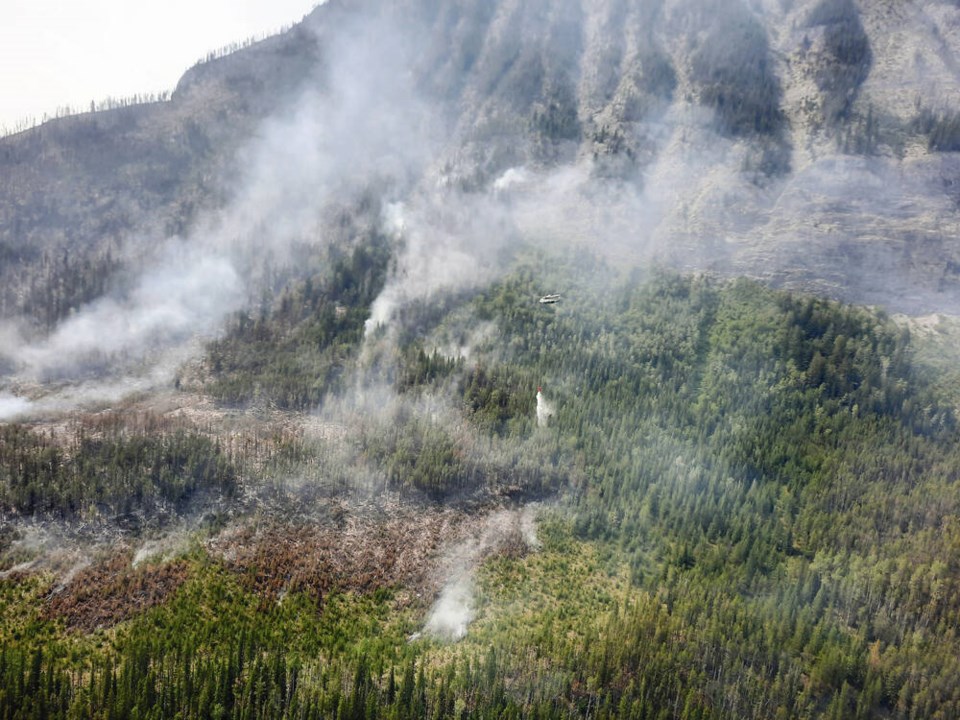A wet spring and damp early summer has allowed Vancouver Island to dodge major wildfires — so far.
But as hot, dry conditions continue — along with lightning strikes — that could change quickly, according to the Coastal Wildfire Centre.
Spokesman Gordon Robinson said 392 hectares have burned in the coastal region so far this year, and more than half that area is in Bute Inlet along the mainland coast, where the Southgate Complex fire has consumed 208 hectares.
Robinson said in a typical year, about 10,000 hectares would have been burned in the coastal region by this time.
Continued heat waves through August, however, have shifted the fire risk to extreme on the South Island, and high to extreme on the rest of Vancouver Island, he said.
Three wildfires were sparked on Wednesday, including a brush fire at Fort Rodd Hill in Colwood and a fire that ignited brush and timber near Cedar on Nanaimo River Road. Both were tackled by local departments with support from the wildfire service, which said the Colwood fire is considered human-caused while the cause of the Nanaimo-area blaze is unknown.
Another wildfire near Mount Hayes west of Ladysmith was sparked by lightning and is under observation. It is listed as a spot fire under a hectare in size.
Robinson said sustained temperatures in the high 20s and mid 30s have dried out the forest floor and turned grasses and other foliage into easy ignition sources. “We are now into conditions where fires can start easier and spread faster,” he said.
Almost all of the 17 fires on Vancouver Island this season have been caused by lightning, while a handful are listed as having unknown causes. Most have been under a hectare and in remote areas, and have not threatened any structures, said Robinson.
Robinson says the wildfire service’s initial attack crews — and local fire departments — have responded quickly to any fires sparked. The initial attack crews are on standby at several locations and are airlifted into areas to create perimeters or fight the fires before they spread.
The Burman Lake fire in Strathcona Provincial Park close to Golden Hinde — the Island’s largest peak — continues to burn out of control, increasing in size to 40 hectares since a lightning strike two weeks ago.
The wildfire service is not actively fighting the blaze because steep cliffs have made it impossible to access, said Robinson. The wildfire service has established a perimeter and is watching the fire’s behaviour.
The other large fire, on the Nimpkish River south of Woss, is still listed as out of control and has grown to 25 hectares since a lightning strike last Saturday.
A perimeter has been established and fire crews are fighting that blaze from three sides on a mountain slope, said Robinson.
On Wednesday, the Malahat weather station set a temperature record for Aug. 24, hitting 29.8 degrees and surpassing the previous mark of 29.3 set on the same date in 2016. Weather records have been kept there since 1986.
After heat warnings amid temperatures reaching 29 to 34 C on east and inland parts of the Island Thursday, Environment Canada said cooler temperatures are expected Friday and into the weekend.
Meanwhile, the B.C. Wildfire Service says two of the five blazes classified as “wildfires of note” in the province will have their status rescinded.
It says the Briggs Creek wildfire, located about 11.5 kilometres west of Kaslo, and the Mount Docking fire, 27 kilometres east of the village of Radium Hot Springs, are being removed from the bulletin.
The service classifies wildfires of note as those that are “highly visible or which pose a potential threat to public safety.”
It says the fires no longer meet this description due to reduced fire behaviour and activity that it attributes to changing weather conditions and efforts by firefighting staff over the last few days.
— With files from The Canadian Press





